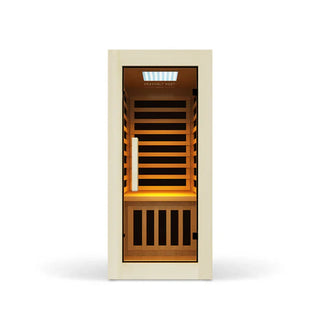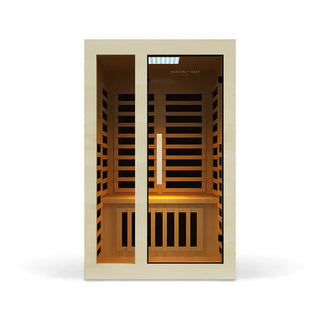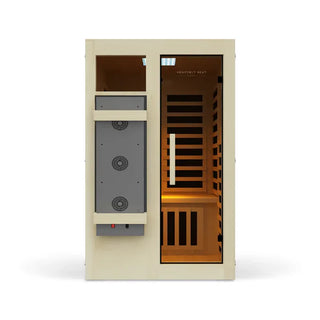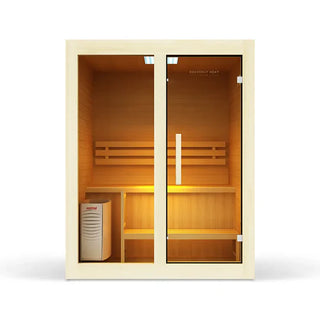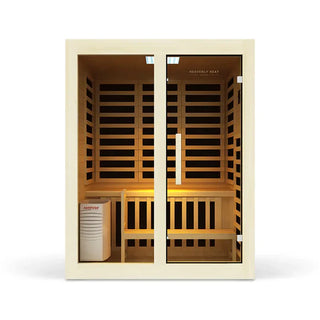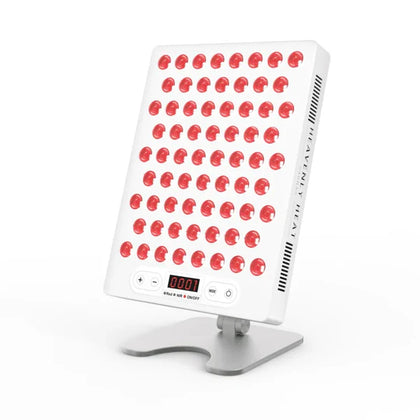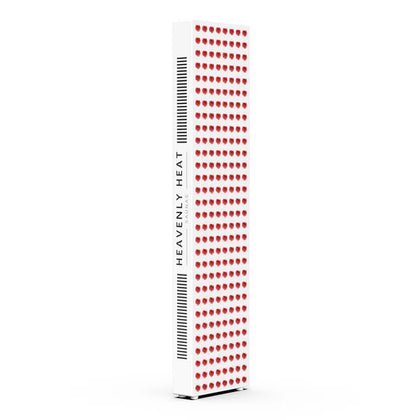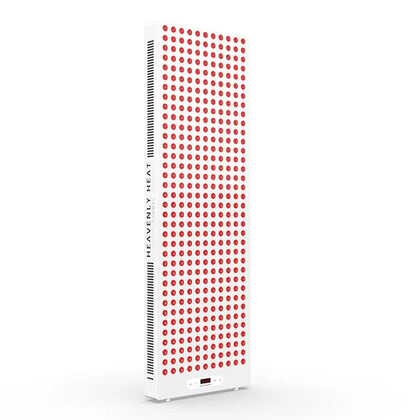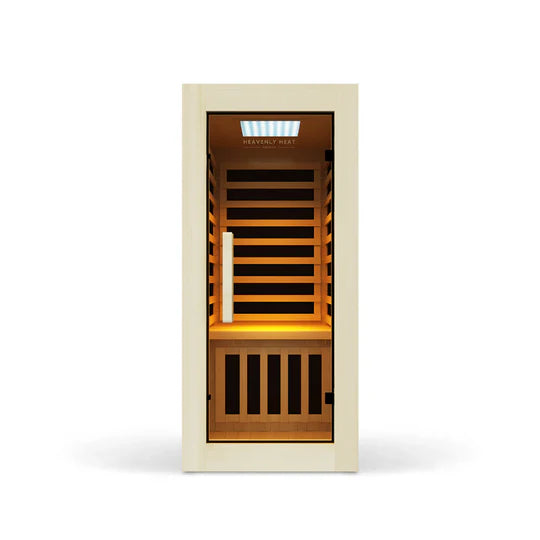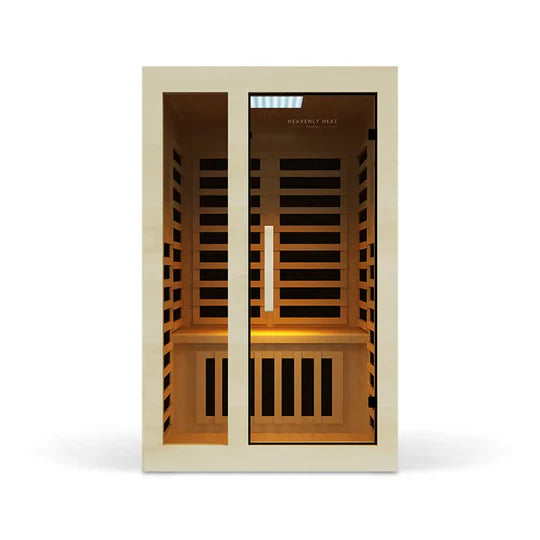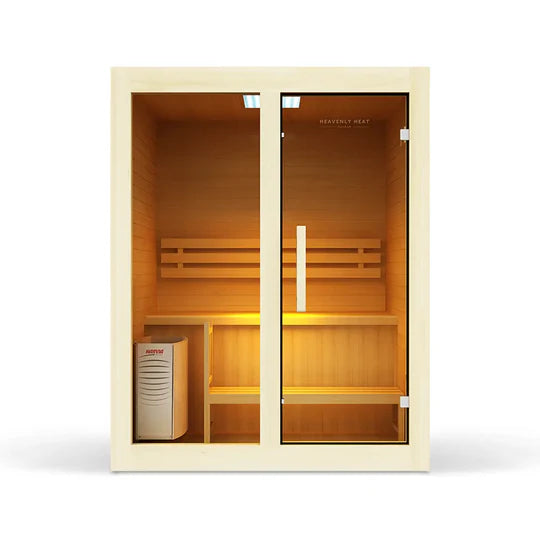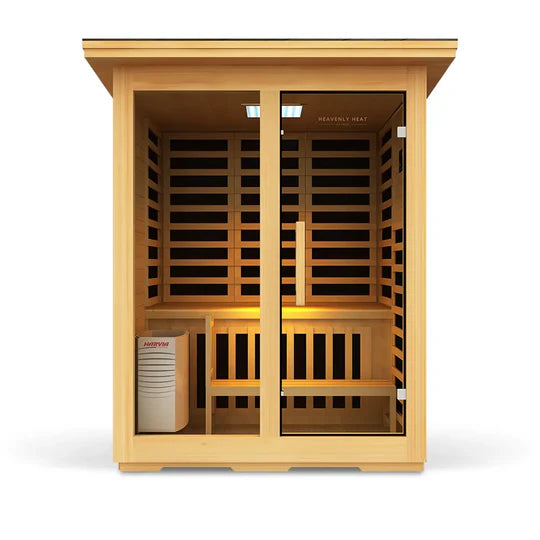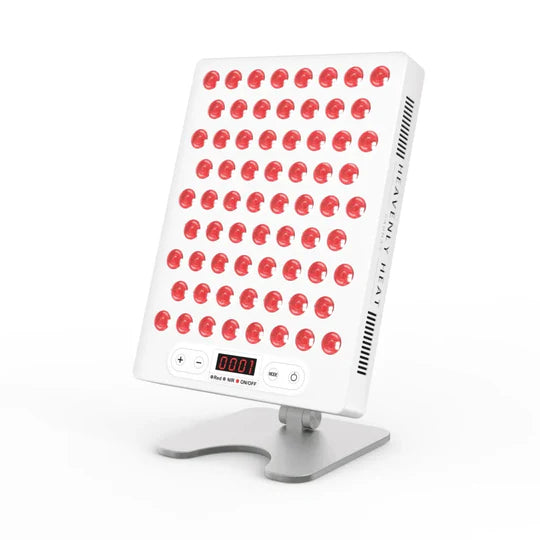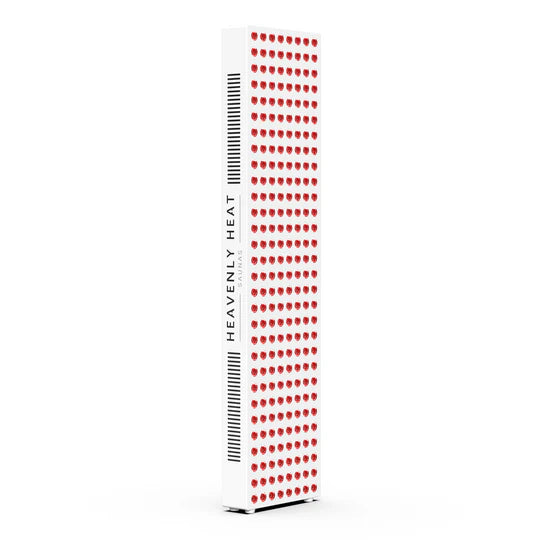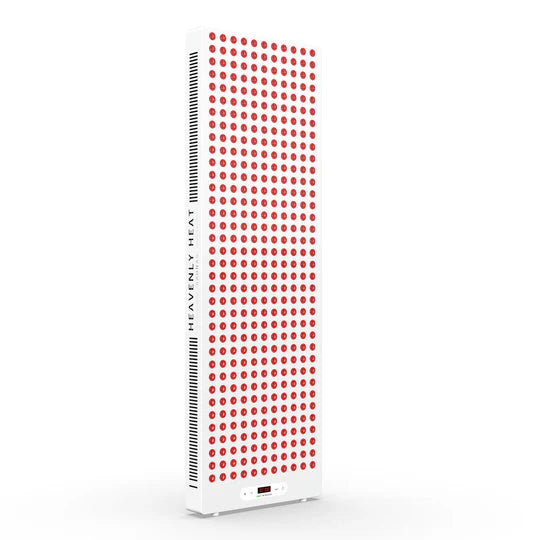How Long to Stay in a Sauna?

Saunas have been used for centuries to relax and promote overall well-being. They offer a variety of benefits, such as reducing stress, improving cardiovascular health, offering pain relief, and soothing sore muscles.
But there's often confusion about how long you should stay in a sauna to experience these benefits without any negative effects.
For most people, it's safe to stay in a sauna for 10–20 minutes per session. You can use the sauna anywhere from 2 to 7 times a week for optimal benefits.
Are saunas generally safe?
- Most healthy people can safely use saunas: If you're generally healthy, using a sauna is safe and can help with blood flow, relaxation, and getting rid of toxins through sweat.
- You need to drink water before and after your sauna: Because saunas make you sweat a lot, it’s important to drink enough water before and after your session to avoid dehydration and feel your best.
- Staying too long or drinking alcohol in the sauna can be risky: Using a sauna for too long or combining it with alcohol can lead to low blood pressure or heart problems , so it's better to keep things moderate and skip the drinks.
- Saunas with low EMF levels are safer for your body: Some saunas give off electromagnetic fields ( EMFs ), which may be harmful if too high. Look for ones that stay within safe EMF limits to protect your health.
- The type of wood in the sauna matters for your safety: Good saunas are made with natural wood like cedar or hemlock, and they don’t use toxic glue or chemicals that could be harmful when heated.
- Good airflow and easy controls make the sauna more user-friendly: A sauna that lets you control the temperature easily and has proper ventilation is not just more comfortable, it’s also safer to use regularly.

Expert Advice: How Long Is Safe to Stay in a Sauna?
- Staying in the Sauna for 10 to 20 Minutes Can Help Your Heart: Dr. Jari Laukkanen's study shows that spending 11 to 19 minutes in a sauna lowers the risk of sudden heart-related death by 7%. Just a short session can already support your heart health.
- Sitting Longer Than 19 Minutes Can Give Even Bigger Benefits: When people stayed in the sauna for more than 19 minutes, the chance of dying from heart problems dropped by 50%. If done safely, longer sessions may protect your heart even more.
- 20 Minutes at 174°F Is the Sweet Spot for Most People: Dr. Rhonda Patrick suggests that the best results come from a 20-minute session at 174°F with low humidity. This temperature and timing give your body the full benefits without overdoing it.
- Always Wait at Least 10 Minutes After Exercise Before Going In: If you’ve just worked out, let your body cool down for 10 minutes before entering the sauna. This helps you avoid overheating or feeling faint inside.
- Too Much Heat Can Be Dangerous for Your Body: Dr. Andrew Weil warns that sitting too long in the heat can make you dizzy or even faint. To stay safe, keep your sauna time between 10 and 20 minutes.
What Factors to Consider Before Using a Sauna?
Let’s discuss some of the factors that can affect the duration of a sauna session. Here are the following:
Consideration of Age Before Using a Sauna
- Children should limit sauna time to 5 minutes: Younger users, especially children, should not stay in the sauna for more than 5 minutes due to their lower tolerance to heat.
- Parents should supervise children in the sauna: It is crucial for parents to keep a watchful eye on children when they are using the sauna to ensure their safety.
Impact of Health Conditions on Sauna Use
Assuming your physical health is in good condition, you should comfortably enjoy up to 10-20 minutes in the sauna without encountering any significant issues.
However, individuals with fever, open wounds, heart conditions, high blood pressure, or kidney issues should avoid using saunas in most cases.
If someone has one of these health issues, they should consult with a doctor for more personalized advice.
Importance of Sauna Temperature in Safe Usage
Traditional saunas are most commonly set between temperatures of 150-175 degrees Fahrenheit.
If your sauna aligns with these temperatures, it’s advisable not to stay for more than 20 minutes.
However, if you lower the sauna temperature, you can extend the duration of your session.
Sauna Use During Pregnancy and Its Precautions
No matter how relaxing and enjoyable it may feel, if you are pregnant, it is advisable to consult with a doctor before using the sauna.
Many experts recommend keeping the sauna sessions short and using a low temperature of 104°F (40°C) for the safety of both the mother and the baby.
What Happens to Your Body if You Stay in a Sauna for Too Long?
- Risks of Staying Too Long in a Sauna: Using a sauna for too long can be risky. The extreme heat can cause dehydration, overheating, skin burns, or even heatstroke. Overheating occurs when your body temperature exceeds 40°C, which can lead to confusion, dizziness, and dry skin.
- Listen to Your Body and Exit if Uncomfortable: Pay attention to your body’s signals. If you feel uncomfortable or dizzy, leave the sauna immediately. Ignoring these signs can lead to serious health consequences.

Can You Die From Staying in a Sauna Too Long?
Yes, it can happen, but it is very rare. Someone’s death can occur if they sit in the sauna for too long.
Prolonged time in the sauna can lead to heatstroke, which can be a cause of death.
Therefore, it is essential to listen to your body. If you feel dizzy, lightheaded, or nauseous, immediately leave the sauna.
How Often Can You Use a Sauna?
- Using the sauna a few times a week is usually enough: Most people get the best results by using the sauna between 2 to 7 times per week . It’s not about daily use for everyone, it’s about what suits your body and lifestyle while still giving health benefits.
- Going more often may help protect your heart: Research shows that people who use the sauna more often have a lower chance of dying from heart disease . In fact, using the sauna 4–7 times a week can cut your risk by 50% compared to just once a week.
- Staying longer during each session makes a difference: According to Dr. Rhonda Patrick, using the sauna at around 174°F (80°C) for 20 minutes gives the best results. She found that people who stayed in for more than 19 minutes had much better heart health compared to those who stayed less.
- Use the sauna often, but don’t ignore how your body feels: Even if frequent sauna use is good for health, it should never come at the cost of your comfort or safety. If you start feeling unwell or uncomfortable , stop right away and get medical help if needed.
However, it's important not to push yourself beyond your tolerance. If you're feeling unwell or uncomfortable, it’s crucial to leave the sauna immediately and consult a doctor if necessary.
Things to Avoid While Relaxing in a Sauna
Using a sauna is generally safe, but there are a few things to consider when relaxing in it. To keep your sauna experience safe and relaxing, avoid the following:
- Avoid consuming alcohol or heavy meals before or during a sauna session, as they can increase the risk of dehydration and dizziness.
- Avoid using electronic devices, as the heat and humidity can damage them.
- Avoid using lotions, oils, or other products that can drip and create a slippery surface.
- Avoid tight-fitting clothing, as they can make you uncomfortable in the sauna.
- Avoid wearing jewelry, as the high temperature in saunas can make it hot, risking skin burns.

Can I sit in the sauna for an hour?
Staying in a sauna for one hour is considered excessive. The general recommendation is around 10–20 minutes per session , as exceeding this duration may result in overheating, dehydration, or, in severe cases, heatstroke.
FAQs
Can Your Sauna Duration Change Based on the Type of Sauna (e.g., Infrared vs. Traditional)?
The duration in a sauna depends on the type. Infrared saunas (120-150°F) are safe for 30-45 minutes, while traditional saunas (150-195°F) are best for 15-20 minutes due to their higher intensity. Infrared saunas penetrate deeper for muscle recovery, while traditional saunas use heat and humidity, making the air feel heavier. Always listen to your body.
Does Timing Your Sauna Session Post-Workout Affect Its Benefits?
Wait 10–15 minutes after exercise to let your heart rate stabilize before using the sauna. Aim for a 15–20 minute session within 30–60 minutes post-workout to reduce soreness, improve circulation, and aid muscle recovery.
Can You Split a Long Sauna Session into Intervals for More Safety?
Breaking up your sauna session into intervals helps prevent overheating and reduces strain on your heart. Resting for 5-10 minutes between intervals lowers the risk of heatstroke and allows your body to recover.
Does Your Hydration Level Affect How Long You Can Stay in a Sauna?
Hydration is key to safely staying in a sauna. Drink 16-20 ounces of water 30 minutes before entering. Proper hydration helps your body regulate temperature and sweat, reducing the risk of heat exhaustion. If dehydrated, sweating becomes harder, and you may feel lightheaded. When well-hydrated, you can typically stay 15-20 minutes, but always listen to your body for discomfort.
